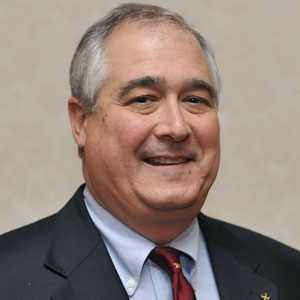
What is most exciting about being NASS president?
One of the greatest pleasures of my 28 years as a member of NASS has been to see the society grow from its humble beginnings to its current position of preeminence; the most exciting thing about being the president of NASS is the organisation itself. At nearly 9,000 members, NASS is the largest, most inclusive spine society in the world, and truly a comprehensive society which continues to provide leadership in the realms of research, education, patient care and public policy. This diversity of purpose is mirrored by the diversity of the membership, with representation from all specialties involved in spine care. I am truly humbled to have the opportunity to lead an organisation like this — small enough to be responsive to the needs of the members and of society, and large enough to have a footprint for meaningful progress.
What are the biggest problems facing spinal surgery?
The most immediate problem is certainly the transition to value-based care, now compounded by the uncertainty of implementation in the wake of the results of the recent US presidential election. NASS has excellent working relationships with many policy groups, healthcare systems and monitoring organisations. One of our first priorities is to provide assistance, guidance and education for our members as this paradigm shift proceeds or possibly reverses.
Another challenge is appropriate coverage of evidence-based treatments. Our Clinical Guidelines and Appropriate Use Criteria groups continue to be extremely active in this critical area. The duty to anticipate regulatory changes or at the very least react swiftly to them is absolutely essential for healthcare professionals to be able to continue to provide the finest care for spine patients.
How can societies like NASS advocate for its members on these points?
In a word, tirelessly.
In the area of public policy, the Advocacy Council and Health Policy Council are having a significant impact on national and local healthcare delivery and reimbursement issues. This activity is increasingly important, particularly given the results of the recent US presidential election. The transition to value-based care and MACRA (Medicare Access and CHIP Reauthorization Act) is one that has been anticipated by NASS, and for which a great deal of educational and policy effort have been spent. Obviously, the future of this paradigm shift is now rather uncertain.
In the area of research, NASS now has a seat with one of the major funding agencies in Washington, DC, USA, and will hopefully be in a position to act as an acute resource on funding issues, particularly in the area of comparative effectiveness research.
What are your priorities for the year ahead?
Aside from the areas noted above, and public policy and research, one of my major goals is to be certain that NASS remains responsive to the needs and desires of all of our members. At the 2016 annual meeting multidisciplinary symposium were extremely well attended, and I received individual feedback from many individuals from different professional backgrounds and specialties that they felt as though this was “their meeting”. I would like to see NASS be “the society” for anyone whose primary interest is in spine care.
What skills and experience from your career so far will you use to attain these goals?
As a lifelong academic surgeon, I have had the opportunity to assume leadership roles in many rather diverse areas—from clinical divisions to research groups to diverse medical staffs. This, I think, broadened my perspective and helped me to understand the needs and concerns of healthcare providers in any position; academic, health system employees, or private practitioners. One thing that unites us all is to put the patient first and provide the highest quality evidence-based care for them. With this mission as the foundation of NASS, the outstanding quality of our committee members, committee chairs, board of directors, full-time staff, and the membership in general, I can see no lack of any depth or persistence in pursuing these goals.













